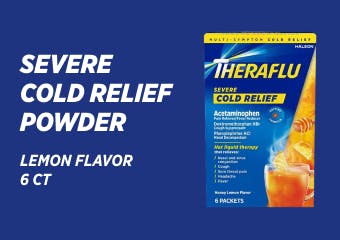Different Types of Headaches
Primary Headaches
Primary headaches are when the headache itself is the main problem and not a symptom of an underlying disease or condition.4 In these cases, headaches aren’t symptoms of larger issues like a cold, flu, sinusitis, or allergies. Some common types of primary headaches are:4
- Migraine headaches. It is typically a pain or pressure on one side of your head. This type of headache can last up to 72 hours, and it might appear with other symptoms as well.4 While there is no cure for migraine headaches, you can make the pain manageable while you recover from them.
- Tension-type headaches. Tension-type headaches usually have pain or pressure around the perimeter of your head—the back, temples, and forehead.4 A tension-type headache can last anywhere from a couple of hours to a couple of days.4
- Hypnic headaches. Hypnic headaches are a rare type of headache that usually occurs in those between 40 and 80 years old.4 This headache can cause pain or pressure anywhere on the head. However, this headache only happens at night and usually doesn’t last for more than an hour.4
- Cluster headaches. Cluster headaches are headaches that happen on only one side of your head. They can last anywhere from 20 minutes to a couple of hours.4 They are called cluster headaches because they can happen multiple times a day before subsiding.
- Sinus headaches. Sinus headaches are headaches that result in pain or pressure in the forehead and behind the cheeks.7 They can sometimes be confused with migraines, but sinus headaches result from congestion and swollen nasal passages. Some symptoms include worsening pain when you bend forward or lie down, stuffy nose, fatigue, achy feeling in your upper teeth, a bad taste when you swallow, and face swelling.7
- New daily persistent headaches. These headaches occur randomly and happen for longer than three months.7 The pain or pressure caused by these headaches are usually on both sides of your head, and most of the time, they don’t respond to medication well.7
Secondary Headaches
Secondary headaches are usually signs of a more serious health issue. While they do cause pain and pressure in your head and in your neck, they can also appear with other symptoms and can start randomly. Some of the more serious issues that secondary headaches are indicators of are:4
- Brain tumors
- Aneurysms
- Meningitis
- A neck injury
- A brain injury
If you have a secondary headache, or a primary headache that lasts longer than the typical timeline, you should consult with your healthcare provider for a diagnosis and treatment plan.

Secondary headaches are usually signs of a more serious health issue. While they do cause pain and pressure in your head and in your neck, they can also appear with other symptoms and can start randomly.
Causes of Headaches
Headaches can be caused by numerous things like genetics, stress, diet, and lifestyle. Some other things that can specifically increase your risk in getting a headache are:5
- Stress
- Not getting enough sleep
- Not eating enough food
- Dehydration
- Eating too many processed foods
- Having a withdrawal from caffeine if you drink coffee
- Changes in weather
- Inhaling smoke
- Bright lights
- Drinking alcohol
- Being on your menstrual cycle
When to See a Healthcare Provider
In certain cases, a persistent headache or one that’s causing you severe pain might be a reason for you to consult with your healthcare provider. Seek medical attention immediately if a headache causes:
- Trouble with your speech
- Fainting or weakness
- A fever greater than 102 degrees Fahrenheit
- Numbness on one side of your body
- Trouble moving around
- Vision trouble
- Vomiting
If your headaches happen more periodically or become more severe, you should also see a healthcare provider. You should monitor whether any over-the-counter are improving or worsening the headache you have along with creating any other symptoms.
How do you treat a headache?
Headaches often go hand-in-hand with the flu, and the best thing to do is get plenty of rest and drink lots of liquids to keep hydrated. Avoiding strong smells and processed foods can help lower your risks of getting a headache as well. Finding a way to manage any stress you have can keep headaches from coming as frequently and even help relieve a headache you already have.
Pain from a headache can often be diminished using aspirin, ibuprofen, or acetaminophen.3 Theraflu ExpressMax Severe Cold and Flu Syrup can help temporarily relieve painful symptoms associated with the cold or flu. It also contains ingredients that treat cough, fever, and chest congestion.
If you are experiencing a headache, along with other symptoms of a cold or flu, finding the most relevant Theraflu product can help relieve your symptoms as help you recover from what’s causing them.




